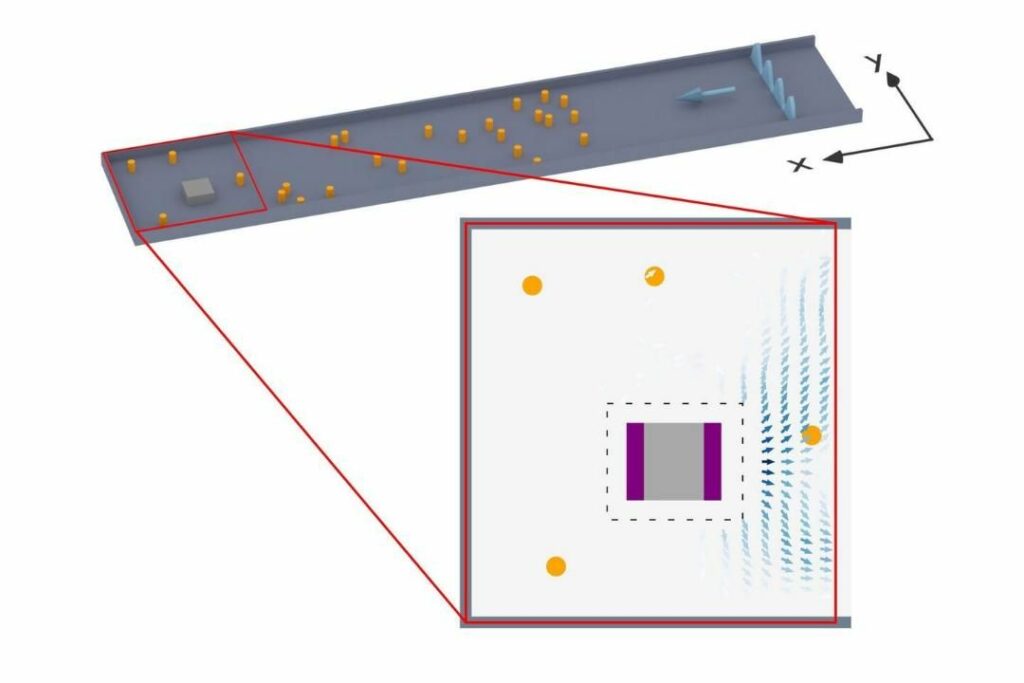A novel theory elucidates the mechanism by which waves transmit information from their surroundings.
Waves obtain information from their surroundings through which they travel. A theory of information carried by waves has now been developed at TU Wien— with rather surprising results which can be put to use in technology.

Ultrasound for examination of body, radar for examination of airspace or seismic waves for the examination of our planet. Most fields of research are now dealing with waves that are bent, refracted or reflected by their environment. Therefore, these waves contain a certain amount of information about their surroundings and this information must then be retrieved as fully and accurately as possible.
Looking for the best method of doing this has been the topic of research all over the world for many years. TU Wien has now also managed to quantify the information that is contained in a wave regarding its surroundings. This has made it possible to demonstrate how waves convey information about an object and how they transfer this information to an instrument of measurement.
This can now be used to generate custom waves to get the most amount of information out of the environment—for more accurate imaging processes, for example. This theory was verified with microwave experiments. The findings were presented in the Nature Physics academic journal.
Where does the information actually reside?
“The basic idea is quite simple: ‘You shoot a wave at an object and the part of the wave that is reflected back from the said object is detected by a detector’, explains Prof Stefan Rotter of the Institute of Theoretical Physics at TU Wien.

“The data can then be used to learn something about the object—for example, its precise position, speed or size. ” This information about the environment that this wave carries with it is known as “Fisher information. ”
Yet, the whole wave is seldom possible to capture. In most cases only a fraction of the wave reaches the detector. This raises the question: But where in the wave is such information actually positioned?Can some of the wave components be considered negligible?Maybe a different waveform might give more data to the detector?
“In order to answer these questions, we decided to delve deeper into the mathematical nature of this Fisher information and arrived at some truly mind-boggling conclusions,” says Rotter.
“The information fits a so-called continuity equation—information in the wave form is conserved as it propagates through space, similar to the law of conservation of energy etc. ”
A clear course of information
By applying the newly established formalism, the research team has finally found out mathematically in which part of space the wave actually transmits how much information about the object. In fact, it is quite surprising, but information about various properties of the object (position, speed, size etc. ) can be contained in completely different parts of the wave.
As the theoretical calculations have illustrated, the informativeness of the wave is defined by how much certain characteristics of the object under consideration affect the wave.
“For example, if we want to measure whether an object is a little further to the left or a little further to the right then the Fisher information is carried precisely by the part of the wave that comes into contact with the right or left edge of the object,” explained the main author of the study Jakob Hüpfl who is a doctoral student at the University of Vienna.
“This information then spreads out, and the more of this information reaches the detector, the higher definition its position can be read from it. ”
Experiments using microwaves support the theory.
In Ulrich Kuhl’s group at the University of Cote d’Azur in Nice, experiments were carried out by Felix Russo as part of his master’s thesis: A disordered configuration was made in an enclosed microwave chamber with Teflon items randomly placed. In between the two objects, a metallic rectangle was placed, the position of which needed to be ascertained.
Microwaves were transmitted through the system and then received through a detector. The question now was: How accurately can the position of the metal rectangle be reconstructed from the waves intercepted in the detector in such a complex physical environment and how does the information propagate from the rectangle to the detector?
By precisely measuring the microwave field, it was possible to show exactly how the information about the horizontal and vertical position of the rectangle spreads: it starts at the respective ends of the rectangle and then travels along with the wave—without any information getting lost, just as the new theory suggests.
Potential uses in numerous fields
“This new mathematical description of Fisher information can help enhance the quality of many imaging techniques,” said Rotter. If it is possible to quantify where the desired information is located and how it propagates, then it also becomes possible, for example, to position the detector more appropriately or to calculate customized waves that transport the maximum amount of information to the detector.
“We did the experiment with microwaves but the same applies to a large range of waves of other length,” says Rotter. “We give straightforward equations that may be employed to enhance the methods of microscopy and quantum sensors. ”
Do not forget to share your opinion with us to provide you with the best posts !



0 Comments